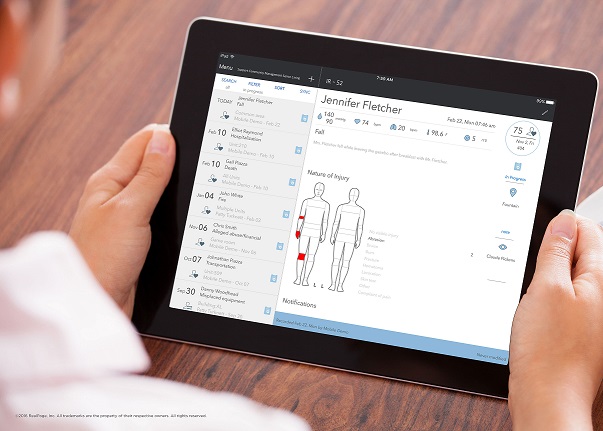7 Ways to Get it Right
By Susan Saldibar
If you work in assisted living, long term care or any senior care environment, you have experienced occasional incidents. It may be a fall, an injury, or even an altercation. Every second counts. You need to get emergency help, when called for, and you need to quickly and accurately create a record of the incident. That means interviewing those involved, along with any witnesses. Timely notifications are required as well.
I spoke with Patrice Danaher, Director of Product Management, with RealPage, a Senior Housing Forum partner. “We all know the importance of incident reporting for purposes of resident safety, recordkeeping and compliance with regulation,” says Patrice. “And we are now able to use technology to increase accuracy, save valuable time and use the data to deal more effectively with risk.”
7 Ways to Get it Right
Here’s how technology and automation can help:
-
Real-time mobile incident reporting: Nothing beats being able to whip out a tablet and log the details of an incident, on the spot, in real-time. Accuracy improves (your witnesses are still on the scene) and you collect key data for your report that might otherwise be lost.
-
Audit trail tracking: With written reports, it can be difficult to determine “who did what” and “when”. Who initiated the incident report? Who documented the details? Did it pass hands? When were medical providers notified? By whom? The list goes on and on. Incident management systems automate the process, and create an audit trail. On demand, a record can be opened that has recorded all the touchpoints along the way.
-
Record freezing: Once a report has been created, you may not want an employee accessing it and making changes. By being able to “freeze” a record, you can protect data so that no one can make changes. This security feature ensures that your report reflects original incident reporting and no alterations have been made.
-
Instant notification: Who needs to know? You should be able to immediately notify a pre-defined list of persons about the incident based upon its type.
-
Incident watch lists: Some types of incidents warrant special attention and monitoring. By setting this up in advance, along with specific instructions and alert notifications, you manage these special needs.
-
Trend reporting: When do incidents tend to occur? Where? Under what circumstances? By using trend reporting, you can often spot patterns you may not have noticed otherwise, related to certain incidents. It’s hard to totally avoid most incidents, but, by identifying triggers to these events, you can work to minimize their occurrence.
-
Integration with other systems: Today it’s possible to interface with back office systems, containing resident information, among other data, so that it is easy to utilize wherever and whenever incidents occur. By pulling that data into your incident reporting system, you save time and ensure that the data is constantly kept up to date.
And, while no one likes to think of lawsuits . . .
“Today’s world is only getting more litigious,” says Patrice. “While using incident management automation technology won’t guarantee the prevention of a lawsuit, it can certainly help. And, if a lawsuit does occur, you’ll be glad you had an incident management system in place. Developing a streamlined, automated process for incident response and management demonstrates to families that your community takes incidents seriously enough to invest in the tools to properly document, report and learn from each incident.”
Incidents won’t wait for you to be “ready”
When incidents occur, they may cause confusion, inappropriate actions and, often, poor follow up. “The more that can be integrated, automated and kept secure, the greater chance senior care providers have to respond, record and learn how to try to reduce the likelihood of that incident happening again,” says Patrice.
She also recommends that senior living communities using automated incident reporting tools share them with prospective new residents and their families. “It’s important for families to know that, should something happen, the community has the tools in place to be able to alert family members, take appropriate action quickly, and accurately record the incident on the spot, leaving no unanswered questions,” she adds.





